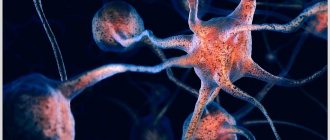Constancy of perception is the relative constancy of certain perceived properties of objects when the conditions of perception change. It is most clearly expressed in the visual perception of the size, shape and color of objects.
The constancy of the perception of the size of an object lies in the fact that the same object, being at different distances from the observer, is perceived by him as the same in size, although the size of the images of the object on the retina of the eyes decreases with its distance.
The degree of constancy of perception will be different at different distances. If you look at a pencil from a distance of 25 cm, and then from a distance of 50 cm, then its image on the retinas in the second case will be half as large as in the first. But its apparent size will not change: the pencil seems to us to be an object of the same size. This is a case of complete constancy. At a distance from 3 to 500 m, the visible size of objects gradually decreases, but to a lesser extent than the size of their images on the retinas. The constancy of the perception of magnitude becomes incomplete. At long distances it completely disappears. If the apparent size of objects at a distance of 1000 m is taken as one, then at a distance of 2000 m the object will appear half as large; at a distance of 10,000 m - 10 times less, etc. In other words, at long distances the visible size of objects will correspond to the projected size of their images on the retinas. The perception of magnitude becomes constant.
- The basis for the constancy of perception of the size of objects is a conditioned reflex to a complex stimulus: irritations from the eye muscles are added to irritations coming from the retinas. arising when they contract at the moment of fixation of the gaze on an object. This combination of stimuli, which coincides several times with tactile stimulation from an object of known size, is a signal of the actual size of the object (I. P. Pavlov).
At a small distance of objects from the observer, adaptive eye movements (convergence - bringing the visual axes inward and accommodation - changing the shape of the lens for better vision at different distances) increase, so the constancy of the perception of magnitude is complete or almost complete. When perceiving objects at large distances, the mechanism of convergence and accommodation is turned off. The main signal of the size of objects is the images on the retinas. The perception of magnitude becomes constant. When determining the size of an object at a distant distance, a person compares it with the size of other objects that are well known to him and located nearby.
It has been experimentally established that with binocular vision (when seeing with two eyes), the constancy of the perception of magnitude is higher than with monocular vision. And this is understandable: when observing with one eye, the number of motor impulses coming from the receptors to the cortex is significantly reduced due to the convergence being turned off; only the motor reflex of the lens remains. It has also been proven that the degree of constancy of the visible size of things well known to man is higher than in the perception of geometric figures, the size of which is usually arbitrary.
The perception of the shape of an object also has, within certain limits, the property of constancy.
The constancy of the perception of the shape of an object is the relative constancy of the visible form when the position of the object in space changes. The image of a flat object on the retina of the eyes changes depending on the position of the object in space. But the visible form of an object either does not differ at all from its actual form (complete constancy), or differs only slightly if we compare it with the shape of the image of the object on the retinas (incomplete constancy). Thus, the image of the plate will be either a circle or a more or less elongated ellipse, and the retinal edge of the notebook will be either a rectangle, or a rhombus, or a trapezoid, depending on the angle of view of the observer. But we usually perceive these objects as they really are; We see the plate as round, and the notebook as a rectangular quadrangle.
The constancy of the perception of the shape of an object is explained in the same way as the constancy of the perception of size. Looking at an object, we very quickly and imperceptibly trace its contours with our gaze. If an object is located at an angle to the line of sight, we notice that one of its edges is closer to us, and the other is further away. Irritations from the convergent and accommodative muscles combine with irritations from the retina of the eyes, forming a complex stimulus, with various variants of which (depending on the variants of the position of the body in space) a person is already familiar with previous experience.
Constancy of color perception is the relative invariance of the visible color of objects when lighting changes. We see black velvet and coal black both in midday sunlight and at dusk. And under the same lighting conditions we see sugar and chalk as white. This is a case of complete constancy of the visible color of objects. The constancy of the visible color of objects under chromatic lighting is less pronounced. We perceive snow as white both in the crimson sunset and in the blue light of neon lamps. However, under very bright chromatic lighting, the constancy of color perception may disappear, and objects will take on the color of the lighting. This feature of perception is widely used in the theater to create the desired impression on the audience.
The constancy of visible color is higher when an object is perceived against the background of other objects. Changing the intensity of illumination or its color simultaneously changes the color of all objects in the field of view. A person develops a conditioned reflex to the relationship between color stimuli, which allows him to recognize the colors of objects regardless of changes in lighting, i.e., constantly. For example, he saw many times a forest, a field, a sandy hill, a lake and the sky above them at sunny noon, at dawn, at foggy twilight, at night. Adapting to changing lighting, a person could not help but notice that the colors of all objects familiar to him change each time in a certain direction (some darken, others lighten, turn pink, turn blue, etc.). Thus, the sandy bank of a river in bright sunlight appears lighter than the water surface of the river, and at dusk, on the contrary, it appears darker.
The degree of constancy of color perception depends on the simultaneous or separate influence of several conditions: adaptation to the general level of brightness of the visual field, the effect of light contrast, and the perception of the light source. Additional conditions such as the distance of the object, shine, highlights, shadows, etc. also have an impact.
Characteristics, properties, features of perception
Perception (perception) is the reflection in the human mind of objects, phenomena, and integral situations of the objective world with their direct impact on the senses. In contrast to sensations, in the processes of perception (of a situation, a person), a holistic image of an object is formed, which is called a perceptual image
. The image of perception is not reduced to a simple sum of sensations, although it includes them in its composition.
The main properties of perception as a perceptual activity are its objectivity, integrity, structure, constancy, selectivity and meaningfulness.
· The objectivity of perception is manifested in the attribution of images of perception to certain objects or phenomena of objective reality. Objectivity as a quality of perception plays an important role in the regulation of behavior. We define objects not by their appearance, but by how we use them in practice.
· The integrity of perception lies in the fact that images of perception are holistic, complete, objectively formed structures.
· Thanks to the structure of perception, objects and phenomena of the surrounding world appear before us in the totality of their stable connections and relationships. For example, a certain melody, played on different instruments and in different keys, is perceived by the subject as one and the same, and stands out to him as an integral structure.
· Constancy
-
ensures the relative constancy of the perception of the shape, size and color of an object, regardless of changes in its conditions.
For example, the image of an object (including on the retina) increases when the distance to it decreases, and vice versa. However, the perceived size of the object remains unchanged. People who constantly live in a dense forest are distinguished by the fact that they have never seen objects at a great distance. When these people were shown objects that were at a great distance from them, they perceived these objects not as distant, but as small. Similar disturbances were observed among residents of the plains when they looked down from the height of a multi-story building: all objects seemed small or toy-like to them. At the same time, high-rise builders see objects below without distortion of size. These examples convincingly prove that constancy of perception is not an innate, but an acquired property. The constancy of perception ensures the relative stability of the surrounding world, reflecting the unity of the object and the conditions of its existence. · Selectivity of perception consists in the preferential selection of some objects over others, due to the characteristics of the subject of perception: his experience, needs, motives, etc. At any given moment, a person identifies only some objects from the countless objects and phenomena surrounding him.
· The meaningfulness of perception indicates its connection with thinking, with an understanding of the essence of objects. Despite the fact that perception arises as a result of the direct impact of an object on the senses, perceptual images always have a certain semantic meaning. To consciously perceive an object means to mentally name it, i.e. assign it to a certain category, summarize it in a word. Even when we see an unfamiliar object, we try to catch its similarity with familiar objects and classify it into a certain category.
Perception depends not only on irritation, but also on the perceiving subject himself. The dependence of perception on the content of a person’s mental life, on the characteristics of his personality is called apperception. Perception is an active process that uses information to formulate and test hypotheses. The nature of the hypotheses is determined by the content of the individual’s past experience. The richer a person’s experience, the more knowledge he has, the brighter and richer his perception, the more he sees and hears.
The content of perception is also determined by the task set and the motives of the activity. For example, when listening to a piece of music performed by an orchestra, we perceive the music as a whole, without highlighting the sound of individual instruments. Only by setting the goal to highlight the sound of an instrument can this be done.
An essential fact influencing the content of perception is the attitude of the subject, i.e. willingness to perceive something in a certain way. In addition, the process and content of perception are influenced by emotions.
Everything that has been said about the influence of personal factors on perception (past experience, motives, goals and objectives of activities, attitudes, emotional states) indicates that perception is an active process that depends not only on the properties and nature of the stimulus, but to a large extent on the characteristics of the subject of perception , i.e. the perceiving person.
Depending on which analyzer is the leading one visual, auditory, tactile, gustatory and olfactory perception are distinguished The perception of the surrounding world, as a rule, is complex: it is the result of the joint activity of various senses.
Depending on the object of perception, the perception of space, movement and time is distinguished
The perception of space is an important factor in human interaction with the environment, a necessary condition for orientation in it. The perception of space includes the perception of the shape, size and relative position of objects, their relief, distance and direction in which they are located. The interaction of a person with the environment includes the human body itself, which occupies a certain place in space and has certain spatial characteristics: size, shape, three dimensions, direction of movement in space.
Determination of the shape, size, location and movement of objects in space relative to each other and the simultaneous analysis of the position of one’s own body relative to surrounding objects are accomplished in the process of motor activity of the body and constitute a special higher manifestation of analytical-synthetic activity, called spatial analysis. It has been established that the basis of various forms of spatial analysis is the activity of a complex of analyzers.
Time is a human construct that allows us to mark out and distribute our activities. The perception of time is a reflection of the objective duration, speed and sequence of phenomena of reality. The sense of time is not innate; it develops through experience. The perception of time depends on external and internal factors. Just like other forms of perception, it has limitations. In actual activity, a person can reliably perceive only very short periods of time. The assessment of the passage of time can be changed by various factors. Some physiological changes, such as an increase in body temperature, contribute to the overestimation of time, while other changes, such as a decrease in temperature, on the contrary, contribute to its underestimation. The same thing happens under the influence of motivation or interest.
Perception is often classified according to the degree to which consciousness is directed and focused on a particular object. In this case, we can distinguish intentional (voluntary) and unintentional (involuntary) perception. Intentional perception is, at its core, observation. The success of observation largely depends on prior knowledge about the observed object. Purposeful development of observation skills is an indispensable condition for the professional training of many specialists; it also forms an important personality quality - observation.
Perception as a perceptual activity.
Observation and observation
Perception can be considered not only as one of the cognitive processes, but also as a relatively independent perceptual activity. Perception as a process is included in various types of practical and mental activity of a person as one of its components, which are not always clearly recognized. But it becomes a relatively independent perceptual activity if it has a goal, a system of motives, methods of implementation and a certain result. Perceptual activity includes a number of perceptual actions.
Let us explain this with an example.
Someone, for example a geographer, goes to a river in order to study the characteristics of its flow in a certain place. He walks through the meadow, busy with his thoughts, poorly noticing the surrounding objects, but nevertheless not losing his way and avoiding the usual obstacles - a bush, a stone, a puddle. Perception, as part of his mental activity at the moment, acts as one of the processes of sensory reflection of the situation, without which activity would be impossible. But the path turned out to be a deep ravine that had to be crossed. Perception immediately becomes arbitrary and purposeful, transforms into a relatively independent activity that precedes practical actions: before crossing a ravine, one must carefully examine its slopes and bottom, that is, perform a certain system of orienting actions (perceptual actions). This activity, in turn, is subordinated to an activity that is broader in scope: having overcome the obstacle and reaching the river, the geographer chose a convenient place and began to observe the movement of water, the nature of the banks, etc., changing position several times and writing something in a notebook. Perception has become a special activity - observation. Perceptual activity can also include the perception of a film, landscape, concert, etc.
Currently, in the field of child and engineering psychology, numerous experiments are being conducted to study perceptual actions in their genesis (emergence and development) in a child and in the production activities of an adult, for example, in the work of a dispatcher or other operator. Researchers point out that perceptual actions occur in a certain sequence and form a certain system of actions, namely: first, the object is detected; then highlighting its most informative features, for example, the contour characteristic of a given object; This is followed by familiarization with the selected features (examination, feeling, etc.) and, finally, identification of the object, i.e., assigning it to a certain category of objects (for example, plants, animals, mechanisms, etc.). As indicated at the beginning of the chapter, in adults these indicative and exploratory actions proceed quickly, in a “collapsed” form. Detection and identification are extremely difficult when there is rapid oncoming movement of an object and an observer, for example a pilot, a machinist, or a driver. The duration of perceptual actions is measured in seconds or fractions of a second. With such a lack of time, it is difficult to avoid mistakes.
One of the teacher’s tasks is to teach children to observe and develop in them a vitally valuable personality trait - observation. Observation is a long-term, targeted perception of an object, carried out according to a specific plan, followed by analysis and generalization of the data obtained.
Observation is necessary in any human activity - educational, labor, creative. Before completing any task independently, the student watches how the teacher performs it. Before starting work on a new or repaired machine, a worker observes it, checking the serviceability of individual parts and the mechanism as a whole. A teacher, teaching and raising children, constantly monitors the behavior of students, the process of their assimilation of knowledge, the characteristics of each student’s work, and the results of his educational influences. In scientific activities, observation often acts as a special research method, for example in the natural sciences, psychology, etc.
Observation only gives valuable theoretical or practical results when the following conditions are met.
- The observer clearly understands the purpose of observation, has practical knowledge of observation techniques in this area and has some knowledge about the object of observation. Sometimes special instruments are required for observation; they must be studied in advance.
- There is an observation plan that specifies the sequence, time, location and number of observations.
- Observation data is recorded in the form of descriptions, protocols, transcripts, sketches, photographs, phonograms, film documents, collections of samples, etc. Objectivity requires that not only those facts that correspond to the observer’s hypothesis are selected and recorded, but also facts that contradict it.
- The observation results are carefully analyzed, compared, and, if possible, subjected to quantitative processing. All this is necessary to identify the essence and patterns of connections of the object being studied.
People who, from an early age, are accustomed to purposeful and systematic observations of the phenomena of the surrounding world, develop powers of observation. Observation is a persistent typical feature of a person’s mental make-up, which manifests itself in the ability to sufficiently fully and comprehensively perceive and imagine objects in the surrounding world, highlight subtle, but sometimes quite significant features in them, notice differences in similar phenomena and objectively interpret the results of one’s observations.
Some people have all-round powers of observation, while others are predominantly observant in a particular area, such as nature, technology, or human psychology. Observation is a very valuable human ability, necessary for the formation of his thinking and for practical activities. It needs to be developed in children as early as possible.
Block 1. Perception. Definition.
Perception is a subjective process of limited formation of images of the external/internal world, transforming images generated by sensory stimuli.
The difference between sensation and perception is that perception in all cases is associated with an object, but sensation in the vast majority of cases is not. When a subject reports perception, this means that we are talking about a specific object, phenomenon. A person does not perceive anything in general and in particular, in reality he sees, hears, and feels real objects.
The content of the image of perception is largely influenced by factors such as the environment and culture in which a person lives. Vygotsky L.S. managed in his works to reveal the meaning of this key idea, which was repeatedly confirmed subsequently by accumulated empirical material.
Images of perception of objects and events are combined into a general image of the world, which can otherwise be called a figurative model of the world.
Read the article “Brain and psyche in brief. What is Connectom? Anokhin Cognit.
Thus, the arrangement of objects in space and time, as they are reflected in the mind through perception, for example, the diagram of the city of Delhi (India), the musical works of Christoph Gluck, the images of Hieronymus Bosch and the whole set of other objects, ultimately create a figurative model of the world.
Floyd Allport identified six distinctive features of perception.










